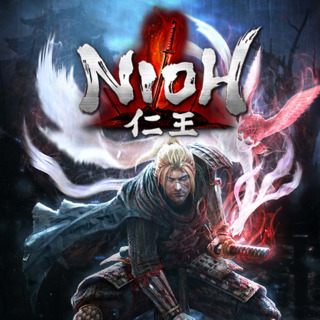At first glance Nioh may look like another Dark Souls clone, but its more than that. Nioh doesn’t hide its Dark Souls inspiration. In fact, developer Team Ninja embraces it, all while making it completely their own.
In Nioh you play as William, a blonde-haired Irishman tracking down an enemy that leads him to Japan. In his quest he discovers ancient enemies known as Yokai (essentially demonic monsters), and various warriors native to the land. The story itself kept me intrigued, although at times parts of it could have been more fleshed out, as in both William and the villain: Kelley. Minor gripes aside, the mere fact that a coherently told story was presented is something of note. The Souls series have a story that’s told more-so in the environment rather than presented at face value. Nioh’s story feels like a blend between anime and sweeping samurai epic. Depicting a war-torn 1600’s Japan filled with Yokai, ninja, assassins and rulers.
Nioh’s mission structure is quite simple at a glance, yet elaborate once played. Displayed as a mission select screen, it features a layout of the available missions, including level difficulty and rewards upon completion. This provides a gameplay loop where my awarded materials are used to craft certain items at the blacksmith. It’s a neat little incentive that kept me playing missions. The sub-missions however feel repetitive at times. There are a handful of fetch quests that require William to locate missing items for his allies. It’s a shame some of these missions couldn’t be fleshed out more.
Finding resources aren’t the only way to acquire new items. General gameplay provides weapon and item loot dropped by enemies, or found in item boxes throughout a mission. The more I played I began to realize how much it borrows from other games. Nioh features the unforgiving nature of both the Souls series/Ninja Gaiden and rewarding nature of loot from Diablo. In fact many of the missions reminded me of Diablo’s dungeon traversing.
The many environments William traverses throughout 17th century Japan are richly detailed. From the darkest caves to the majestic grass fields, Nioh’s many combat arenas are artfully detailed; never feeling repetitive. Bringing a sense of wonder into each new mission. Coupled with finding shortcuts, there is a sense of reward when progressing through each environment, trying to reach the next shrine-Nioh’s version of bonfire’s. It’s not always that easy, many elements hinder your progression. Meaning enemies, traps, and environmental hazards all play a factor in gritting your teeth in frustration. Now take these mission hazards and apply them to an even harder difficulty. Behold Twilight Missions. Consisting of a select number of missions, these tend to be harder. Adding tougher enemies and bosses.
Nioh is all about patience. Like many games in the similar vein, patience is the key to success. Nioh introduces three different stance modes, low, mid, and high. When in the low stance attacking becomes quicker and uses less Ki-yet is less powerful, mid stance is the same, yet slightly more powerful. High stance is the strongest when it comes to attacking-although Ki diminishes fast. Each one of these stances can be switched on the fly, leading to experimentation when it comes to defeating enemies.
Experimentation goes even deeper in customizing your abilities. Every time William levels up using Amarita-Nioh’s version of souls-he earn’s ability points to use toward different weapons. Sword, dual sword, spear, axe, kusarigama, ninja, and onmyo (magic) have ability tracks to unlock, and different move set’s that can be fully customized as well.
When it comes to defeating your enemy every element is crucial. So when found in a tricky spot the use of your Guardian Spirit comes in handy. Guardian Spirit is an elemental ability that grants extra attacking power and invulnerability for a brief time. Amarita is used to charge-up this attacking power, and further progression into the story unlocks different Guardian Spirits.
One of the main standouts in Nioh when compared to other hack-and-slash games is its use of Ki. Ki is essentially your stamina. While fighting enemies your stamina will deplete based on each type of weapon. Smaller weapons like the twin swords tend to use less Ki while heavier weapons like the Axe will require more.
The KI is to maintain your stamina. Luckily there is a quick-action button, if timed right, will enable the stamina bar to regenerate faster-think of it as Gears of War’s active-reload. After a few attacks a blue magical mist will appear around the weapon indicating the appropriate time to use the action. Like many aspects of Nioh, this simple element to gameplay surprisingly takes time to master. Especially when it comes to enemies, as they have their own stamina bar that needs to be accounted for.
Soloing Nioh isn’t the only way to play the game. Within it’s menu likes the Tori Gate, used to join other players and grind for both loot and Amarita. This mode works quite well, especially when looking up certain missions in a lobby. Picking the desired mission, as well as the preferences used for said mission.
Fellow players can make the game easier, however. If stuck on an enemy, summoning another player can make bosses much easier. There’s no real difficulty scale when fighting an enemy with another player. The same goes for revenants-fallen players displayed as swords on the battlefield. Interacting with revenants allow the player to fight a phantom samurai, and once defeated, be able to acquire their loot; although not as challenging. Lastly, co-op wouldn’t be complete without gestures. There are many to be found-some of which are really amusing-adding fun-nonverbal communication.
Nioh wears its inspirations on its sleeve, all while leaving its own mark. Culminating in a successful rpg, and a rewarding ride from start to finish.

